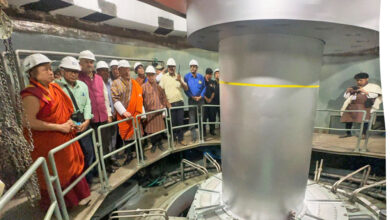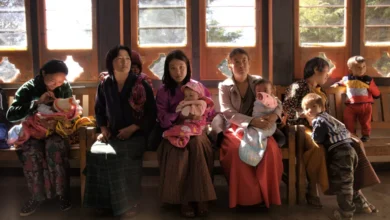Bhutan’s plan to tackle Mpox
On 14 August 2024, the World Health Organization (WHO) declared Mpox to be a ‘public health emergency of international concern.’
Mpox has been around since the 1970s limited to a few countries in Africa, but in 2022 there was a global outbreak of the mpox Clade II virus which came under control, but now, the concern is the more transmissible and deadlier mpox Clade I virus in 2024.
In 2024 there are now around 18,000 plus cases in 12 African countries, and a mpox Clade Ib case was in Sweden on 15 August 2024 and another mpox Clade Ib was closer home in Thailand on 22 August, with both people having travel history to Africa.
The spread of mpox and particularly Ib comes at a time when Bhutan is opening up for the autumn season of tourism, with visitors from all over the world.
Given the lessons of COVID-19, Bhutan is not taking any chances and has already come up with a detailed plan to deal with the mpox.
The Health Emergency Operation Center (HEOC) has been activated from 15 August, and is in the alert phase and all health centers have been notified.
A dedicated team of Technical Advisory Group (TAG) has been formed. There are daily situational updates at Department of Public Health every morning.They are collaborating with WHO for recent updates and technical guidance.
There is enhanced surveillance at the airport with inflight announcements starting from 16 August, and passengers from affected countries are asked to self-report to the airport health office.
When it comes to ground entry, the Department of Immigration and Department of Tourism have been roped in for entry via Phuentsholing, Samtse, Gelephu and Samdrup Jongkhar.
Mpox has also been included as one of the notifiable diseases in in Royal Centre for Disease Control (RCDC). Travel advisory has been shared with the Ministry of Foreign Affairs and External Trade and the public.
The National Aids Control Program is communicating with the high risk populations through their network. In terms of diagnostics, RCDC is collaborating with WHO for RT-PCR kits. The National Institute of Virology in Pune has been identified as the regional reference laboratory for mpox.
The government has developed interim guidance for sample collection, storage, and shipment, and is also exploring the feasibility of instituting testing capacities in the regional PCR testing laboratories, especially at the point of entries.
On the vaccine front, there are three global vaccines available, which are not designed for mpox but have an impact on it.
These are MVA-BN manufactured in Denmark, LC16 manufactured in Japan, and ACAM2000 manufactured in USA. The cost of the vaccine is USD 100 per dose.
The population to be considered for vaccination, at this point, are sex workers, and health workers at risk of repeated exposure and contacts of persons with mpox. Mass vaccination is not being recommended at this point of time. However, the government is exploring the possibility of procuring the mpox vaccine, if needed.
To manage any possible mpox cases, JDWNRH has identified isolation room on the top floor of Gyaltsuen Jetsun Pema Mother and Child Hospital. Infection Prevention and Control measures are being reinforced in the hospitals in addition to virtual sensitization of health workers.
A Technical Working Group (TWG) has been formed to develop mpox Clinical Management Guideline. Both TAG and TWG attended a WHO Webinar on mpox clinical management on 26 August.
The mpox plan has identified green, yellow, orange and red stages in Bhutan.
Green would mean no confirmed cases with outbreak limited to few countries. Yellow is no confirmed cases in Bhutan, but there are mpox outbreaks in neighbouring countries.
Orange is when there will be one or more isolated cases in Bhutan with no secondary transmission. There will be minimal disruption with isolation facility quarantine and discouraging mass gathering in affected areas.
Red is local outbreaks with community transmission in the country. There will be moderate disruptions here, which may mean closure of effected schools or institutions, discouraging mass gatherings and even considering closure of borders as the TAG or taskforce recommendation.
The next steps will be as per the evolving situation of the mpox, and the interventions will be determined by the National Outbreak Staging of mpox as per the TAG’s recommendation.
There will be identification of holding area or quarantine facility in Paro and other points of entry, in case of detection of suspected case at Paro International Airport.
There will be development of quarantine protocol for the incoming travelers from the affected countries based on risk assessment.
There will also be identification of quarantine facilities at the point of entries based on epidemiological situation.
There are plans for each stage, but in case Bhutan reaches the worst case, red stage, there will be widespread community-based surveillance where active cases are being reported, mass screening in high-risk populations and isolation of cases, and facility quarantine of close contacts.
The hospital capacity would be scaled up for mpox patients, there would be adequate supply of medical supplies and equipment and supportive care for severe cases.
Public health measures, such as social distancing and restrictions on mass gatherings, vaccinate high-risk population and contacts, address public anxiety and concerns, advice to be socially responsible, address stigma and discrimination associated with the disease, and psychological support is to be provided to individuals affected by mpox and their families in the red stage.
Other steps at this worst case stage are to take a whole of society approach, activate National Disaster Management Authority (NDMA) and National Task Force, engage community leaders and local authorities in contact tracing and risk communication.
There will be coordination with Ministry of Finance and other national authorities for resource allocation, communication with WHO, donors, and development partners to secure technical and financial assistance, and enhanced coordination with neighboring countries to prevent cross-border transmission.





